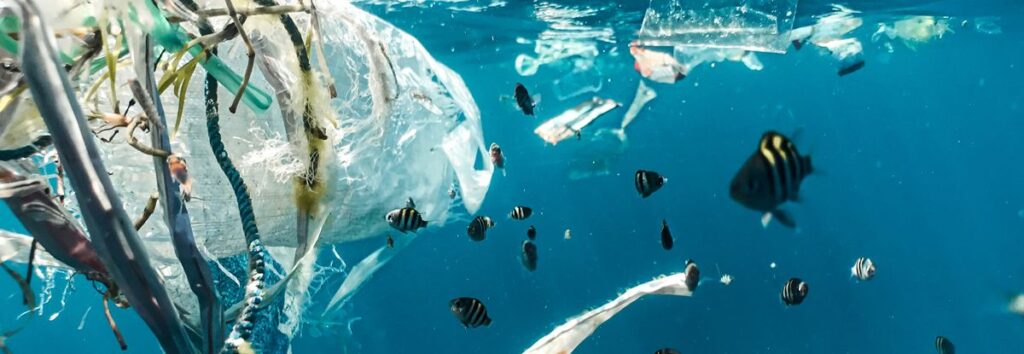Tackling Our Plastic Waste Problem From All Angles
The world has a plastic problem. More specifically, the world has a plastic waste problem. Each year, we produce billions of plastic items — single use and reusable products alike — and more than 8 million tons of those items end up in the ocean.
This month is #PlasticFreeJuly, a global movement to reduce plastic pollution, making it the perfect time to raise awareness about this urgent problem and how we can begin to tackle it.

Naturally, reducing plastic use will reduce the amount of plastic pollution, but how does so much of it get in the ocean anyway?
In a study published in the June 10th issue of nature sustainability, researchers built a database of “riverine floating macrolitter” across Europe and found that a major portion of that litter is routed into the ocean from drainage basins by rivers, streams and coastal run-off.
The largest amounts of leakage come from high-income countries that would seemingly have the best waste management systems. This would indicate that even the best systems are not doing enough to keep trash where it belongs. So, while there should be continued focus on developing better ways to minimize litter in our waterways, we also must prioritize the other side of the issue – consumption.
In assessing the composition of that litter, the study found that 82% of it was plastic. Another study published in the same journal found that plastic bags, bottles, plastic food containers and cutlery, and wrappers account for nearly half of all trash found in the ocean, suggesting that “litter from take-out food and beverages is often discarded outdoors after a short use and should be prioritized.”
Plastics do not easily break down, harming marine and human life, and they shed tiny specks known as microplastics, the impact of which researchers are still trying to understand. So, how do we begin to minimize our plastic waste problem?
The latter study’s authors propose three solutions – ban avoidable single-use items like plastic bags, place extended responsibility on producers and consumers for the treatment and/or disposal of post-consumer products, and introduce strategies that replace top polluting plastic items with similar products made of more-easily degradable materials that “account for all life-cycle impacts on ecosystems.”
phade has embraced the latter approach, creating a substitute for traditional plastic straws with ones made from polyhydroxyalkanoate (PHA), an earth-friendly material derived from canola oil, that break down both on land and at sea but look and feel like traditional plastic. While plastic straws may only represent .025% of the total volume of marine litter, the quantity is quite significant and rapidly rising. Additionally, traditional straws can take more than 100 years to degrade in water.
With phade, we’re doing our part to chip away at the world’s plastic waste problem. As the saying goes, “No one can do everything, but everyone can do something.” Even if it’s as simple as swapping your straw.